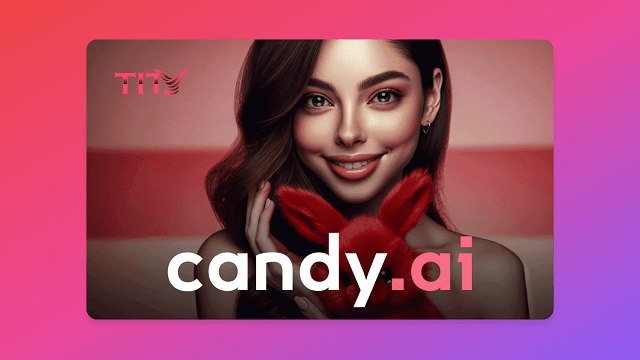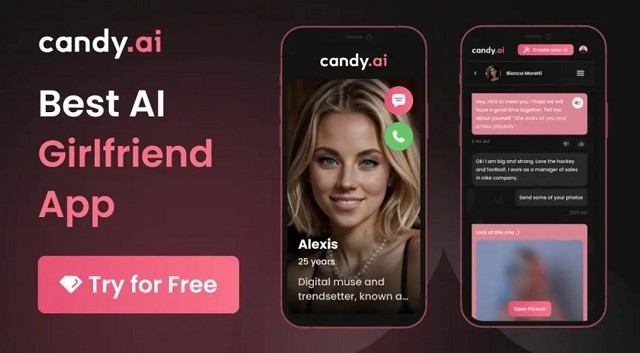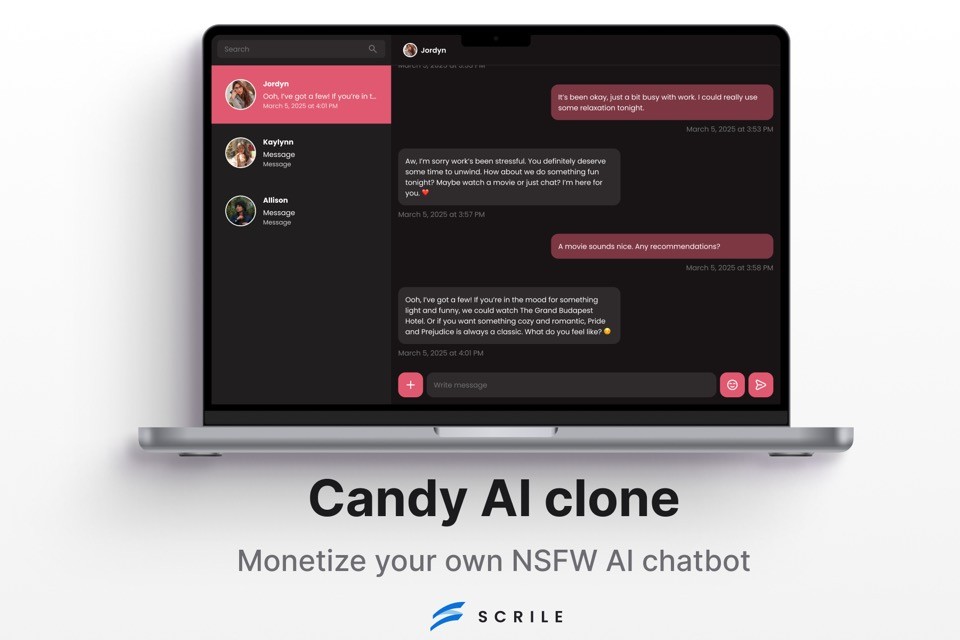Candy AI Clone Cost in 2025: How to Start Your Business
This article will dissect the development cost, business models, and step-by-step development process of developing a Candy AI clone, so that you can strategize the best way to develop a profitable AI-based successful platform.

how to make candy ai clone
Chatbots based on AI have evolved miles from the straightforward text-based chatbots. Nowadays, they form an essential element of customer service, virtual relationships, social networking, and AI-based romance too. As algorithms of NLP and machine learning have evolved further, chatbots are now even capable of being as human-like in conversation. This makes chatbots even more engaging and appealing than they originally were.
Among many AI chatbot platforms, Candy AI has set a benchmark for emotionally intelligent, personalized dialogue. With AI-powered virtual personalities that users interact with, the experience is more human-like than with traditional automated dialogue. This has made Candy AI clones more sought after, with companies looking to capitalize on this new market.
For entrepreneurs wishing to start an AI chatbot company, information on Candy AI cost is a central part of planning an investment. From choosing the best possible AI model to establishing a monetization strategy, making a successful chatbot is a matter of intelligent financial and technical choices.
This article will dissect the development cost, business models, and step-by-step development process of developing a Candy AI clone, so that you can strategize the best way to develop a profitable AI-based successful platform.
Understanding the Candy AI Business Model

Candy AI is not just any chatbot— it is a virtual avatar powered by AI that can generate realistic dialogue and AI-generated visuals. Its blend of advanced natural language processing (NLP) and AI graphics has turned it into a valuable digital asset, with buyers seeking it for virtual friendship, entertAInment, and high-quality AI-generated content.
The business model of monetization behind Candy AI business is what draws entrepreneurs to the notion of creating an identical platform. It has several sources of revenue combined into one, which is a consistent source of income while serving a multitude of individuals.
Subscription access is one of the primary revenue streams, wherein users pay a subscription to access premium AI-powered interactions. Pay-per-message is the other popular model, wherein users purchase credits to engage with AI companions, with the interaction becoming increasingly personalized and monetized. Businesses also offer custom AI models, wherein users can design and train AI personalities for their specific applications, offering an added layer of premium services.
Affiliate partnerships and paid services are additional revenue streams. By integrating with third-party websites, NFT marketplaces, or niche AI-content generators, businesses can create monetization beyond pure user interaction.
With AI-driven personalization and entertAInment gaining popularity, it’s a lucrative idea to use the Candy AI business model in the year 2025. The success comes from providing unique AI experiences that engage the users and have them willing to keep spending on the website.
What Affects the Candy AI Clone Cost?

Developing a Candy AI clone isn’t just about writing chatbot scripts—it requires investment in AI infrastructure, data processing, and seamless user experience design. Several factors impact the total Candy AI clone cost, ranging from development choices to ongoing operational expenses.
Key Cost Factors
- AI model building – Businesses may use pre-trAIned AI models like GPT-4, Claude AI, or Google Bard or build a personalized AI. Pre-trAIned models are faster and more cost-effective to use, while custom AI takes more data trAIning, which comes at a higher cost.
- NLP costs – AI chatbots employ advanced NLP so that conversations sound authentic. Relying on an external API like OpenAI’s GPT-4 or an internal model impacts quality and price.
- Cloud hosting & data storage – AI systems require high-performance computing for real-time responses. AWS, Google Cloud, or Azure hosting ensures smooth performance but raises recurring costs.
- Security & compliance – Handling personal data involves strict adherence to GDPR and CCPA regulations. This comes at the cost of encrypted storage, secure user authentication, and periodic compliance audits.
Estimated Cost Ranges
- Basic MVP – $15,000 – $30,000 for a simple AI chatbot with pre-trAIned responses and basic interaction models.
- Advanced AI chatbot with custom personality traIning – $50,000 – $150,000+ for a fully scalable solution with unique AI models, enhanced emotional intelligence, and monetization features.
The Candy AI clone cost varies with the degree of sophistication in the features, the AI personalization levels, and scalability demands. It is advisable to invest in a decent AI system early on for sustAInAbility and long-run business development.
How to Make a Candy AI Clone: Development Process & Technology Stack
Developing an AI chatbot like Candy AI requires the right combination of artificial intelligence, machine learning, and software development. Unlike basic chatbots, this type of AI model needs to handle both conversational interactions and AI-generated imagery, making the development process more complex. Careful planning, research, and a well-structured technology stack are essential for creating a scalable and profitable Candy AI business.
Tech Stack for an AI Chatbot Like Candy AI
To build an effective chatbot, developers must choose a strong technical foundation:
- AI/NLP Models. Options include GPT-4, Claude AI, Google Bard, or custom-trAIned deep learning models tAIlored to specific use cases.
- Backend Development. Python frameworks like Django or Flask, as well as Node.js, are commonly used for handling user interactions and AI processing.
- Database Management. PostgreSQL and MongoDB store user interactions, AI-generated content, and system logs.
- Frontend & UI. React and Vue.js are popular for building web and mobile app interfaces.
- Cloud & Hosting. AI chatbots require cloud computing solutions such as AWS, Google Cloud, or Microsoft Azure to ensure smooth performance and scalability.
Development Roadmap
The development process for an AI chatbot typically follows these key phases:
- Phase 1. Research and AI model selection, determining whether to use an existing model or trAIn a proprietary one.
- Phase 2. Backend and frontend integration to create a seamless user experience.
- Phase 3. TrAIning the AI with large datasets to enhance its conversational and image-generation capabilities.
- Phase 4. Testing, security optimization, and platform deployment.
The Candy AI clone cost varies depending on the level of customization, AI sophistication, and infrastructure. A simple MVP can start at $15,000, while a fully developed AI with advanced features can exceed $100,000. Entrepreneurs interested in how to make Candy AI clone should focus on selecting the right technology stack and working with experienced AI developers to create a competitive product.
Launch a Candy AI Clone with Scrile AI

Want to skip the technical hassle and go to market quickly? Scrile AI is a turnkey solution for launching a Candy AI clone platform, with every feature you need already built-in. It’s ideal for entrepreneurs who want to own their own NSFW AI chatbot business without starting from scratch.
What Is Scrile AI?
Scrile AI is a white-label NSFW AI companion platform that replicates the Candy AI experience—with more customization, better scalability, and built-in monetization features. You can launch under your own brand and have full control over everything from design to content rules.
Key Features:
- AI Companion Chat: Text-based, flirty, and intimate chats with realistic AI personalities
- Custom Characters: Create your own AI characters and define traits, personalities, and behaviors
- NSFW Image Generator: Generate seductive images from AI prompts with keyword triggers
- Subscription System: Offer monthly plans, blurred-image unlocks, and pay-to-chat experiences
- Admin Dashboard: Manage users, earnings, content, and analytics from a single interface
- User Roles: Support for Guests, Users, Admins, and Studio Managers
- Data Privacy: End-to-end encryption and GDPR compliance
Monetization Tools:
- Monthly/annual subscriptions
- Token-based content access
- Pay-per-image and AI response
- Tiered access with NSFW filters
Why Use Scrile AI?
- Launch in days, not months
- No coding needed
- Lower cost than custom dev
- Keep 100% of your revenue
- Scale infinitely with AI, not staff
If you’re ready to capitalize on the AI companionship trend, Scrile AI gives you a ready-made business model, powerful tools, and full creative control.
Conclusion
The AI chatbot market is expanding at an unprecedented rate, with more users turning to AI-driven interactions for companionship, business automation, and personalized engagement. Platforms like Candy AI have demonstrated the massive potential of AI-powered chat models, opening doors for entrepreneurs looking to build their own successful chatbot businesses.
Creating a profitable AI chatbot requires more than just a basic model—it demands the right technology stack, monetization strategies, and a scalable infrastructure. Whether it is an AI powered dating assistant, your virtual friend, a business chatbot; knowing the Сandy AI clone cost is crucial for budgeting and your overall long-term success. For anyone wanting to catch the trend of Candy AI business, a custom built, fully scalable solution is the way.
For entrepreneurs ready to enter the Candy AI business, having a custom-built, fully scalable solution is the key to standing out. Instead of relying on limited off-the-shelf software, explore Scrile AI to develop a feature-rich, high-performance chatbot tailored to your business vision.
FAQ
How to create your own AI like ChatGPT?
Building an AI like ChatGPT starts with selecting the right NLP model, such as GPT-4 or a custom-trAIned alternative. The chatbot’s purpose must be defined—whether for virtual companionship, business automation, or another use. Developers then set up a backend framework (Python, Node.js), integrate AI APIs, and refine responses with trAIning data. Testing ensures smooth interactions. Those entering the Candy AI business should focus on engagement strategies and monetization features.
How to create a custom AI chatbot?
To develop a custom AI chatbot, first define the use case for the chatbot, then select the best communication platform (e.g., Web, mobile, social media), then select their tech stack, such as TensorFlow or OpenAI’s API. Secondly, AI trAIning can occur, which will allow organizing a structured knowledge base, auditing conversations and preparing conversational sequence. Once the chatbot is built and tested, it will then go in production, where the trend of interaction and response audits continue, while customers continue to engage with it. Сandy AI clone cost depends on how customized the AI is, and how in-depth the AI is trAIned, as well as any monetization features.
How much does Candy AI cost?
The Candy AI clone cost varies based on AI complexity and feature set. A simple chatbot using pre-trAIned AI models costs $15,000–$30,000, while an advanced system with AI-driven personalization can exceed $150,000. Costs depend on AI model licensing, cloud hosting, and scalability needs. Scrile AI solution: Significantly less, with rapid deployment and built-in tools.
Read Also
Create a Fan Club with Membership Perks – Launch, monetize, and nurture a dedicated supporter community with exclusive content.
Make Money Online with AI – Turn chatbots, content generators, and other AI tech into steady online revenue.
Earn from AI Images – Sell unique prints, stock assets, or custom designs and turn AI‑generated visuals into real income.
Sell NSFW Art Successfully – Set client boundaries, price adult commissions, and grow a loyal fan base.
Top Subscription Fan Club Platforms – Build a devoted following, offer premium perks, and secure recurring revenue.
Candy AI Script Guide – Master essential script techniques to craft unique AI characters and elevate your project.
Insightful overview of the development phases and pricing tiers for an AI chatbot business! For anyone who wants practical tools—such as sample scope‑of‑work documents, cost‑estimate spreadsheets, and technology‑stack checklists—visit TrialFiles. You’ll find ‘trial files’ designed to help you model your own Candy AI clone project and test different scenarios risk‑free: https://trialfiles.com/.
Great deep dive into the true cost drivers behind launching a Candy AI clone! If you’re craving more hands‑on breakdowns—like detailed ROI calculators, architecture diagrams, and vendor comparison guides—check out my blog on SoftService. I regularly post step‑by‑-step articles on budgeting AI projects, selecting the right NLP models, and optimizing your cloud spend to maximize profit. Head to https://softservice.org/ for more expert insights and downloadable templates!